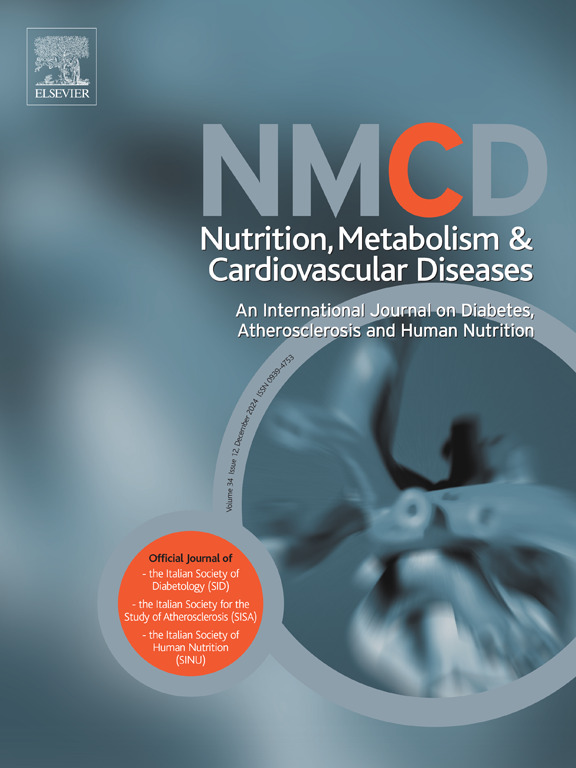代谢功能障碍相关性脂肪性肝病:面对现在和未来的病理生理学和临床框架
IF 3.3
3区 医学
Q2 CARDIAC & CARDIOVASCULAR SYSTEMS
Nutrition Metabolism and Cardiovascular Diseases
Pub Date : 2025-02-01
DOI:10.1016/j.numecd.2024.07.019
引用次数: 0
摘要
本综述旨在提供一个简单明了的概念框架,以帮助人们认识和理解脂肪性肝病广谱谱中的代谢功能障碍相关性脂肪性肝病(MASLD),并指出需要将代谢功能障碍和合并症视为相互关联的因素,从而以整体方法治疗脂肪性肝病。MASLD是脂肪性肝病的新术语,取代了非酒精性脂肪肝的旧术语。该术语侧重于新陈代谢改变与肝脂肪变性之间的关系,反映了人们对新陈代谢功能障碍与肝脂肪变性之间关系的日益理解。许多因素和条件都是导致其潜在机制的原因,包括中心性肥胖、胰岛素抵抗、脂联素、脂代谢、肝功能、饮食影响、肠道微生物群的组成以及遗传因素。然而,该病症的发展涉及到神经肽和高级糖化终产物等更为错综复杂的成分网络,凸显了其发病机制的复杂性。必须将 MASLD 视为一个复杂的临床问题,只有通过协调多专业和多专科的干预措施,采取综合方法才能取得胜利。本文章由计算机程序翻译,如有差异,请以英文原文为准。
Metabolic dysfunction-associated steatotic liver disease: A pathophysiology and clinical framework to face the present and the future
Aims
This review aims to provide a straightforward conceptual framework for the knowledge and understanding of Metabolic dysfunction-associated steatotic liver disease (MASLD) in the broad spectrum of steatotic liver disease and to point out the need to consider metabolic dysfunction and comorbidities as interrelated factors for a holistic approach to fatty liver disease.
Data synthesis
MASLD is the new proposed term for steatotic liver disease that replaces the old terminology of non-alcoholic fatty liver disease. This term focused on the relationship between metabolic alteration and hepatic steatosis, reflecting a growing comprehension of the association between metabolic dysfunction and hepatic steatosis. Numerous factors and conditions contribute to the underlying mechanisms, including central obesity, insulin resistance, adiponectin, lipid metabolism, liver function, dietary influences, the composition of intestinal microbiota, and genetic factors. The development of the condition, however, involves a more intricate network of components, such as neurotensin and Advanced Glycation End Products, highlighting the complexity of its pathogenesis.
Conclusions
MASLD must be regarded as a complex clinical problem in which only a holistic approach can win through the coordination of multi-professional and multi-speciality interventions.
求助全文
通过发布文献求助,成功后即可免费获取论文全文。
去求助
来源期刊
CiteScore
6.80
自引率
2.60%
发文量
332
审稿时长
57 days
期刊介绍:
Nutrition, Metabolism & Cardiovascular Diseases is a forum designed to focus on the powerful interplay between nutritional and metabolic alterations, and cardiovascular disorders. It aims to be a highly qualified tool to help refine strategies against the nutrition-related epidemics of metabolic and cardiovascular diseases. By presenting original clinical and experimental findings, it introduces readers and authors into a rapidly developing area of clinical and preventive medicine, including also vascular biology. Of particular concern are the origins, the mechanisms and the means to prevent and control diabetes, atherosclerosis, hypertension, and other nutrition-related diseases.

 求助内容:
求助内容: 应助结果提醒方式:
应助结果提醒方式:


